Syn.: Yucca angustifolia Pursh, Yucca flaccida var. integra Trel., Yucca stricta Sims
Family: Asparagaceae Juss.
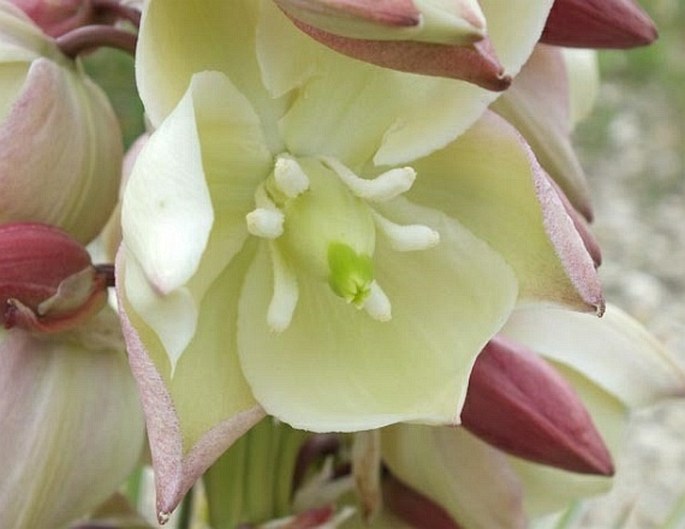
Distribution: Species of North American prairies. Found from extreme south of Alberta and southwest of Saskatchewan, through Montana, Nebraska, eastern Colorado to Kansas, Oklahoma and northern Texas.
Ecology: Grows in grasslands with exposure to sun, in sandy and rocky substrate, even in disturbed areas, in elevations from 500 to 2600 m. Blooms in spring.
Description: Perennial xerophytic semi-succulent herb, suckering into small colonies of 1–15 plants. Stemless but it can be with a stem, single or branched up to 40 cm high. Leaves create a rosette, narrowly lanceolate, widest at centre, 40–60 × 0.8–1.2 cm, stiff, smooth-edged, margins whitish with thread-like fibres. Inflorescence is a terminal raceme, 50–100 cm long, bracts erect, 2–5 cm long, flowers short pedicelate, nodding, 3–5 cm across, hexamerous, outer perianth-segments creamy to greenish white, purple on outside, inner segments creamy to greenish white; anthers yellow, stigma green. Fruit is an oblong capsule, erect, 5–8 cm long.
Note: This species has the largest area of distribution among yuccas. The plant in the pictures is about 200 km north of the regular distribution of extreme southern Alberta and because it was found at several localities in this park, at various stages of growth, it is considered to be distributed by birds. Yucca cannot sexually propagate this far north for lack of its pollinator (prodoxid moth of genus Tegeticula).
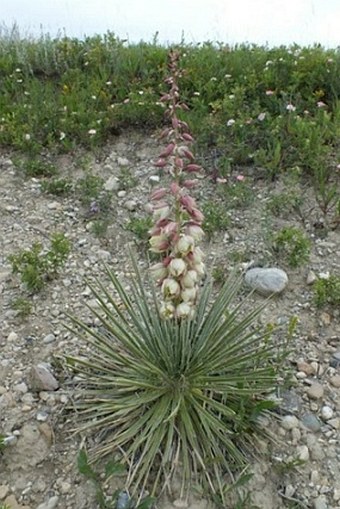
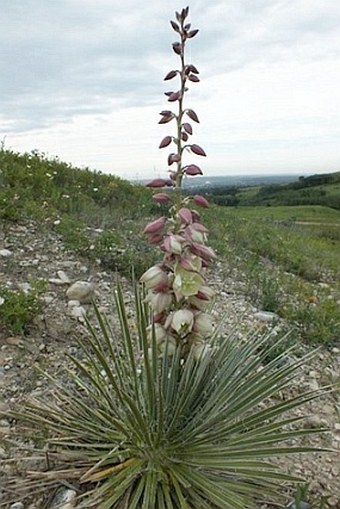
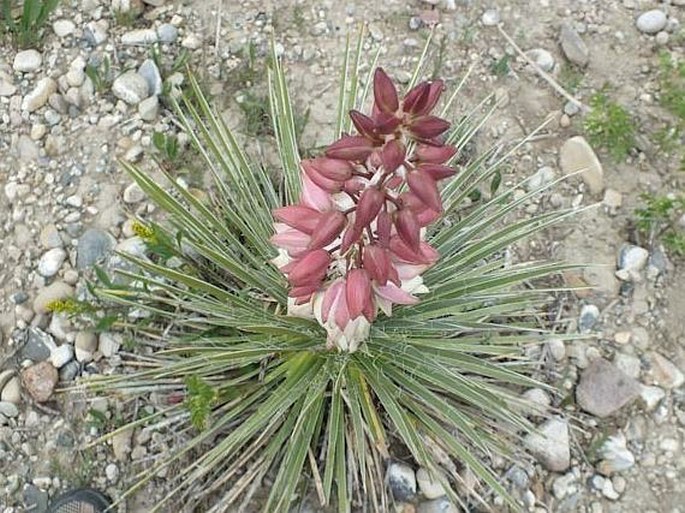
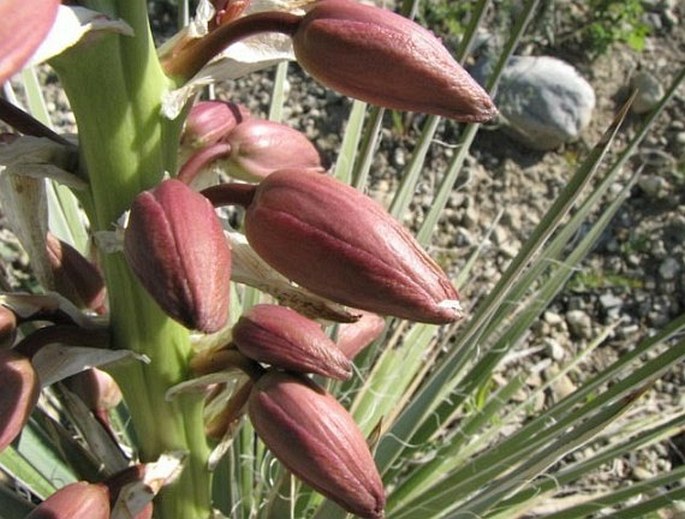
These images were taken in Canada, Alberta, Calgary, Nose Hill Park (July 2013).


